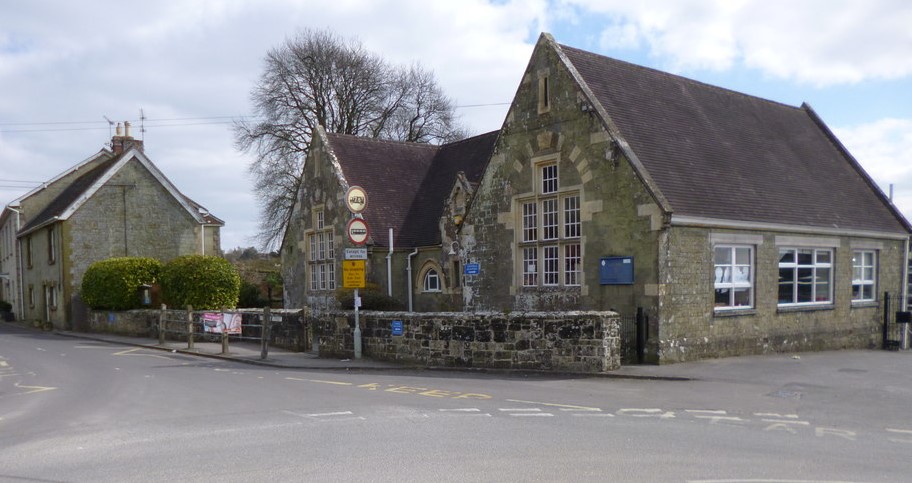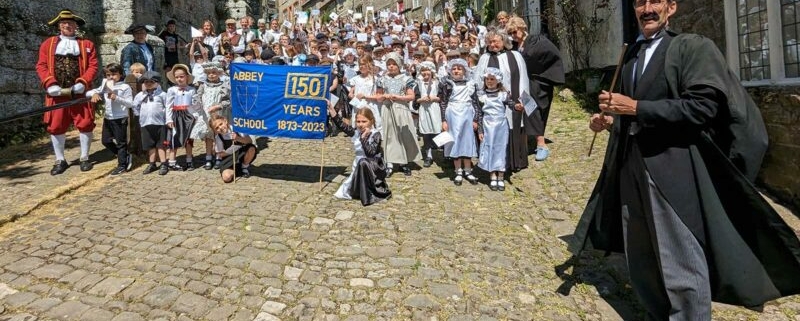Museums Education Team Help Abbey Primary School Celebrate a Big Birthday
Claire Ryley and Penny-Jane Swift looked every inch Victorian schoolmistresses as they helped students and staff of Abbey Primary School re-create activities appropriate for 1873, the year of the School’s foundation. Claire writes:
In the morning Penny-Jane (with her Steps in Time hat on) taught country dancing to well over a hundred children, and then we taught embroidery and Dorset button-making, before the procession to Gold Hill and an all-school photo. This was followed by a dedication assembly and lastly tea, cake and maypole dancing back at school. It was a wonderful day and a tribute to the school, staff, children and parents who entered into the spirit of things with such enthusiasm.

The crocodile along St James Street halted outside Chapel Cottage, where they heard recollections of the building’s previous social and educational uses from resident Colin Francis, a member of the S&DHS. Colin and other participants in the event can be heard here on The Alfred Daily.
The Forster Education Act of 1870 stimulated a surge in the building of schools. The Act laid down principles for the provision of elementary education for all Victorian schoolchildren between the ages of 5 and 12. It did not, however, make elementary school mandatory or free. So the parents of the first pupils of the St James National School, as it was then called, may well have had to pay weekly school pence for their children’s education. Attendance was made compulsory for pupils up to the age of 10 in 1880, and free in 1891.

Kelly’s Directory of 1895 lists two National Schools in Shaftesbury, the other being on Bimport in premises now converted into the apartments of King Edward’s Court, and inspiration for a key episode in Thomas Hardy’s Jude the Obscure. There were also the fee-paying Boys’ Grammar School (opened 1878) and Grosvenor House Girls’ High School (1884) – now an architects’ practice, adjacent to Bell Street Car Park. There would be Poor Law schooling for children living in the Alcester Workhouse. Kelly records the teachers at St James National School as Samuel Robert Fisher, master; Mrs Elizabeth Fisher, infants’ mistress; and John Thurlow, student master. John would in effect be an apprentice pupil-teacher.
There is much more about local Childhood and Schools on the Shaftesbury Remembers website. The services to schools offered by the volunteers of the joint Gold Hill and Shaftesbury Abbey Museums Education Team are described here.



